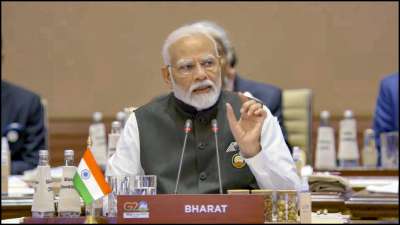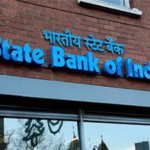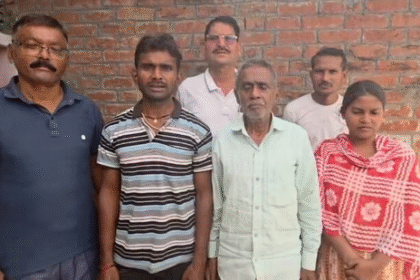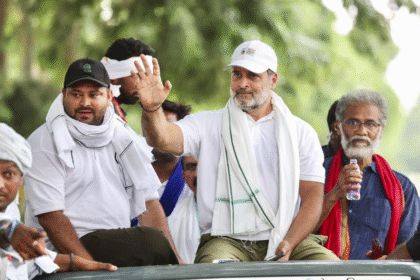India’s Foreign Policy Crossroads: Balancing Global Pressures Without Taking Sides
There has always been a method in New Delhi’s foreign policy neuroses. They are largely a product of India’s weakness as a country and its inability gather the economic and geopolitical heft that would give it true strategic autonomy. This led to the pursuit of non-alignment in the 1950s and has segued into the strategy of multi-alignment in the 2020s wherein New Delhi has considerable influence as a foreign policy actor, but not true autonomy and hence its constant effort is to carefully balance its interests.
Now the problem is that this balance is being rocked by the persistence of turbulence in the global situation. As Peter Frankopan put it in a recent article, “We are living in an age of revolutions – digital and technological, as well as demographic, climatological, military, pathogenic, economic and geopolitical.”
But our policy, constrained by our economic and technological weakness, seems to be stuck in a time warp where it swings from bandwagoning with the US to contain China, to working with actors like the European Union (EU), BRICS and the Shanghai Cooperation Organisation (SCO) to promote a multi-polar balance of power. This leaves everyone—India and its interlocutors—dissatisfied.
The recent BRICS declaration in Rio de Janerio leaves you wondering where India stands. BRICS condemned the Pahalgam attack strongly but was silent on Op Sindoor. At the same time it “strongly condemned” the military strikes against Iran as a violation of the UN Charter (though refraining from naming the strikers). It reiterated “grave concern” about the situation in Occupied Palestinian Territories and condemned Israel violations of the international humanitarian law in Gaza.
India went along with these formulations. Yet it is well known that India’s own positions on the US-Israeli attack on Iran has been or for that matter the developments in Gaza have been, to put it politely, milder. In mid-June, the SCO failed to adopt a joint declaration upon because it omitted reference to the Pahalgam attack.
India may soon approach a defining point between multi-alignment and bandwagoning. Trump has declared an additional 10% tariff on countries aligning themselves with the allegedly anti-American policies of BRICS. Earlier he had threatened worse in the event of BRICS moving towards de-dollarisation.
The frailty of India’s foreign policy became evident when over 60 countries – including the US and the BRICS grouping – condemned the attack and supported India’s right to fight terrorism but none explicitly condemned Pakistan for the Pahalgam attack in official statements as New Delhi might have hoped.
Two weeks later, when India hit Pakistan through Op Sindoor, our “strategic partners” the US and Russia, and members of the SCO, Quad and BRICS, chose to take a neutral view of the situation and called for restraint and dialogue. Of course, Israel was the one country that strongly backed India’s right to self-defence, with some commentators there drawing parallels between India and Israel’s challenge with cross-border terrorism.
‘Terrorism’
One reason why this happened is that the Modi government conflates separatist militancy in Kashmir with terrorism. In the last ten years, the Modi government has used “cross-border terrorism” to hector Pakistan and demand its diplomatic isolation. In some measure, this anti-terrorism posture is for domestic consumption. Largely on Indian insistence almost every overseas joint statement carries a condemnation of terrorism.
The problem is that the world differentiates between militancy and terrorism. And because India is seen to have long cried “Wolf!” over “cross-border terrorism”, the world community is not willing to take India’s word and condemn Islamabad when a genuine and horrific act of terrorism occurs as in Pahalgam – done almost certainly on Pakistan’s instance.
In recent months, what has become obvious are the limits of bandwagoning with the United States. It is not just the chaos of US policy, characterised by a shrill and confusing approach to a range of issues, but the shifts there which directly affect India. Perhaps the most significant became obvious when the US condemned the massacre in Pahalgam but avoided any direct condemnation of Pakistan.
Operation Sindoor and Pakistan’s rising fortunes
More important, after Op Sindoor began, the US adopted a policy of equidistance. President Trump subsequently and insistently began claiming that the US had helped terminate the crisis and offered to mediate its end.
New Delhi was disconcerted by this turn of events where the US appeared in the India-Pakistan issue as a mediator of sorts. It is certainly not happy about the fact that the US is now hyphenating India and Pakistan.
Far from finding fault with Islamabad on account of terrorism, on June 10, the US Central Command chief General Michael Kurilla told the US armed Services Committee that Pakistan had been “a phenomenal partner in the counter-terrorism world.”
Other developments added to New Delhi’s discomfort. On June 18, Trump invited the new Pakistani Field Marshal, Asim Munir to lunch at the White House. This was the first time the US President had hosted a Pakistani army chief who was not also the head of state. The meeting clearly indicated that the Trump administration was reaching out to Pakistan and was taking a “realist” approach by dealing with the Army, instead of its civilian government.
At the same time India gained little on the Sindoor issue from its multi-alignment partners either. Indeed, countries like Russia, concerned about New Delhi’s closeness to the US have been signalling that they are willing to re-think their Pakistan policy. In the recent face off between the two countries, Russia took a neutral stance. It condemned the Pahalgam incident, but called for restraint and dialogue. In 2024, Russia’s Prime Minister and Deputy Prime Minister visited Pakistan on account of SCO meetings. In April 2025, Moscow hosted a meeting of the Russia-Pakistan working group on counter-terrorism. This was followed by the visit of Russian Deputy Foreign Minister Andrey Rudenko to Islamabad for consultation to take forward Russia-Pakistan ties.
Pakistan and Russia have agreed to develop an extensive rail and road network to link South Asia with Central Asia and Russia. The agreement was reached in early July with Pakistan’s communications minister Abdul Aleem Khan and Russian deputy minister of transport Andrey Nikitin meeting on the sidelines of the SCO ministerial meeting in Tianjin, China. These moves are linked to another agreement to link Uzbekistan-Afghanistan-Pakistan through a railway line.
This appears like a strategic recalibration of Pakistan-Russia relations with both countries diversifying their partnerships. In this case, closer China-Pakistan relations have helped Islamabad to use its SCO membership to forge closer ties with Russia.
As for China, its response to the Pahalgam attack came through its backing of the April 25 UN Security Council resolution that condemned the attack in the “strongest terms”. China adopted an ostensibly neutral position saying that India and Pakistan should exercise restraint and “handle relevant differences properly through dialogue and consultation….” . When Operation Sindoor began, Beijing expressed its regrets for the development and called for restraint despite underlining the fact that “China opposes all forms of terrorism” in an indirect reference to Pahalgam. It also called for an impartial investigation into the incident.
But the reality is that China was firmly behind its “iron brother” Pakistan. Subsequent reporting on the Indian side suggests that Beijing assisted the Pakistani military by real-time intelligence relating to Indian missile and fighter deployments.
India has been able to do little to dent the growing China-Pakistan partnership. Recall that during the Kargil war in 1999, Beijing had taken a neutral posture and refused to take out Islamabad’s irons from the fire. It is only after China’s refusal that Prime Minister Nawaz Sharif had rushed to Washington to get the US to do the needful.
South Asia
A new regional alliance may be emerging to replace the stagnant SAARC, with China, Pakistan, and Bangladesh holding talks in Kunming on June 19. This proposed grouping aims to strengthen South Asian connectivity and cooperation. China is expected to expand the bloc by drawing in nations like Afghanistan, Maldives, and Sri Lanka, raising strategic concerns for India and altering the regional diplomatic equation.
Trade has taken on heightened importance as it becomes increasingly weaponized in global geopolitics. Critical resources like minerals and advanced technologies—especially in semiconductors, AI, and manufacturing—are being leveraged for national advantage. India, after years of hesitancy toward trade pacts, is now attempting to revive agreements, but with difficulty. Negotiations with the U.S. remain unpredictable, especially given Donald Trump’s looming political influence. Meanwhile, India’s trade ties with ASEAN are under strain due to concerns about the influx of Chinese goods via the bloc. New Delhi is even weighing the termination of its FTA with ASEAN, a move that could significantly impact broader political relationships in the region.
India’s foreign policy is not entirely unsuccessful, but it grapples with deep-rooted structural and execution-related challenges—both within its immediate neighborhood and on the global stage. While the Indian economy has shown resilience and growth, allowing the country to maintain strategic autonomy and a notable global presence, its comparative economic weakness remains evident. With a GDP of $3.5 trillion, India lags significantly behind China’s $27 trillion economy, limiting its capacity to project power and influence internationally.
India’s domestic challenges—such as inadequate infrastructure and rising unemployment—further restrict its ability to translate economic growth into global influence. A key concern lies in the government’s competence and its ability to manage these structural issues effectively. Much of India’s diplomatic energy is directed toward symbolic gestures and performative events, such as the highly publicized G-20 summit in 2023 and Prime Minister Modi’s frequent high-level international visits, which often overshadow deeper policy implementation and strategic planning.
The government seems unclear on whether it should seriously take Washington’s belief that India is emerging as “a leading global power” and is its “vital partner”, or needs to sometimes balance against it through the BRICS, SCO and G-20. But over time, whether it is trade or military procurement, it is finding its options narrowing. Next year, it faces a big test when New Delhi assumes the presidency of BRICS, which is now in the cross-hairs of Trump.








